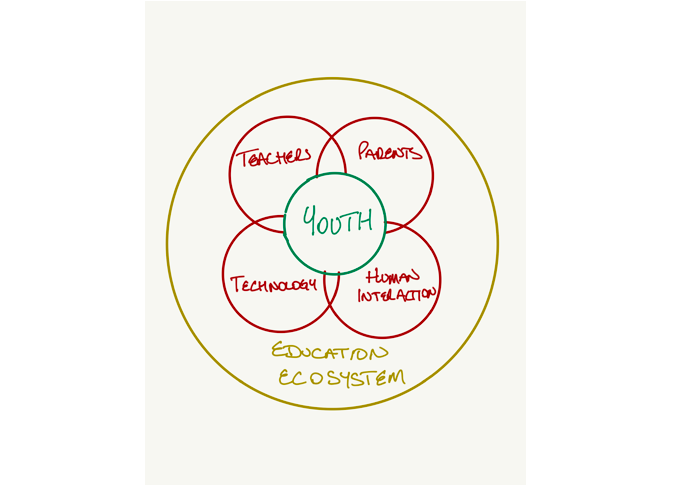Amongst other major events, the impact of Covid-19 has probably marked this century. Youths have been adversely affected and the event attributed to some of the greatest concerns relating tomental well-being, employment, income loss, disruptions to education, familial relations and friendships, as well as a limitation to individual freedoms (OECD, 2020). In terms of work, during the pandemic, the vulnerability of young people has been mostly associated to long term unemployment or temporary contracts. Working in the most affected sectors such as retail, hospitality and tourism was another ascription, but the effects of Covid-19 were not limited to employment and in spreading the NEET phenomenon, as they also hit the working parameters of schools and the education sectors.
Employment and NEETs
Interventions to assist youths during the last decade were successful in bringing down the number of NEETs across the EU, however, this trend was reversed in 2020 where the average rate of NEETs stood at 13.7% by the end of that year as a result of Covid-19 (Eurostat 2021). Measures to curb the spread of the virus such as the several lockdowns experienced caused the complete reconsideration of outreach methods used in targeting this vulnerable cohort.
In reaching out to these youths, it entailed a shift in the services offered and training provided, which both had to move to digital platforms. Face-to-face training moved online, and technology provided a medium to keep training and skilling ongoing. Nevertheless, this transition implied that young people had to have the adequate technology to enable them to follow courses online.
Given the composition of the cohort, training and service providers had to evolve to not only provide their service online in a rapid manner. In addition, they also had to ensure that the service provided is personalised and targeted, since the NEETs group is a broad category encompassing a heterogenous population including the unemployed, school dropouts and all discouraged college graduates who still have not found a job.
Apart from the rapid move to online services consisting of personalised and targeted content, the training and skilling of the youth in general required to further change in focus. This means an adaptation to the increasing need for reskilling in green and digital skills as Europe transits to reach net-zero emissions by 2050, a target thatputs increasing pressure on the skills transition and thereby, the acquisition of such new skills.
Education
During the pandemic, the closure of schools and universities has affected more than 1.5 billion children and youths worldwide and it has significantly changed how youth and children live and learn (UN, 2020). In fact, it is envisaged that some of the innovative teaching and learning tools and delivery systems schools and teachers took up in response to the crisis may have a long-lasting impact on educational systems.
Access to technology was a key factor during the pandemic for young people to keep in touch with their peers as well as for their education as it offered opportunities to follow remotely, but technology on its own is not sufficient, as a number of variables play an important part in ensuring that the educational process is as seamless as possible in a time of lockdown or when educational courses have moved online.
For remote learning to be effective towards young people, the pandemic has shown the need for the interplay between five main elements:
Technology keeps learning ongoing. In a time of lockdown, it was technology that ensured that the educational process keeps on going. Nonetheless, to progress it entails technological availability for all; students, teachers, and schools alike. Such assurance will limit the repercussions on schools and students in terms of the technology they can avail of, so they are not left behind.
Teachers have a critical role. Moving from classroom-based teaching to online requires educators to develop curricula but also to adapt these to the technology platform being used, and to change the pedagogical approach accordingly. Regular and effective on-going professional development and support is hence essential in adopting a technology driven learning experience and to develop pedagogic tools that are effective remotely.
Education is an intense human interaction. Remote learning can be successful if there is a meaningful two-way interaction between the students and their teachers. Technology enables such an interaction but the local and contextual situation of the educational environment must be taken into consideration for such an adaptation to be effective.
Parents are key partners to teachers. The involvement of parents adjusts as well as mitigates some of the limitations of remote learning. Remote education, or a blended approach to learning using both online and in-classroom teaching would require parents’ equipment with the know-how and the necessary tools to support their youth.
A dynamic educational ecosystem. It is necessary for public institutions to work in close multilateral coordination with other public, private and academic entities in the education, training, and employment sectors to effectively orchestrate different players and to secure the quality of the overall learning and upskilling experience.
Whilst transitioning out of a pandemic and most of the young people have returned to a degree of the previous life and schooling norms, as we face the aftermath with an outlook towards the future world of work, there remain options for our consideration. As we build the future, we ought to ask whether the tools developed during the pandemic can still be used and transferred into a blended educational approach, or alternatively, serve as a backup utility to support in-class learning whilst also focusing less on the academic and bridging over on the parameters of hands-on learning together with work placements as well as remote working opportunities. Whatever the case, this cannot be introduced unilaterally without considering the key factors that would make learning and work more effective in the future.


